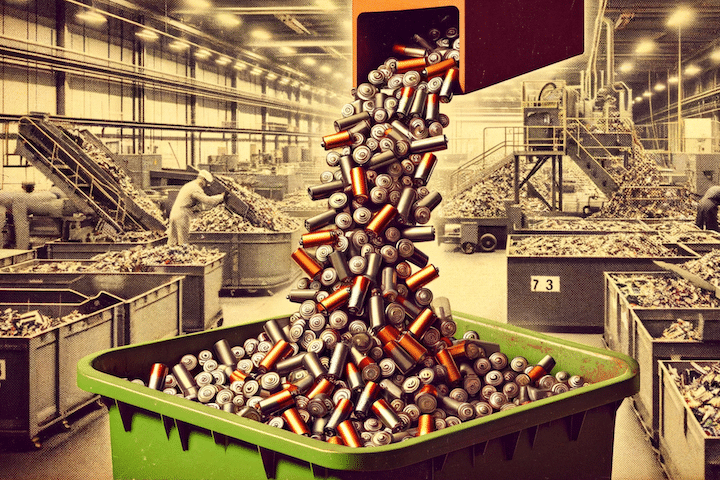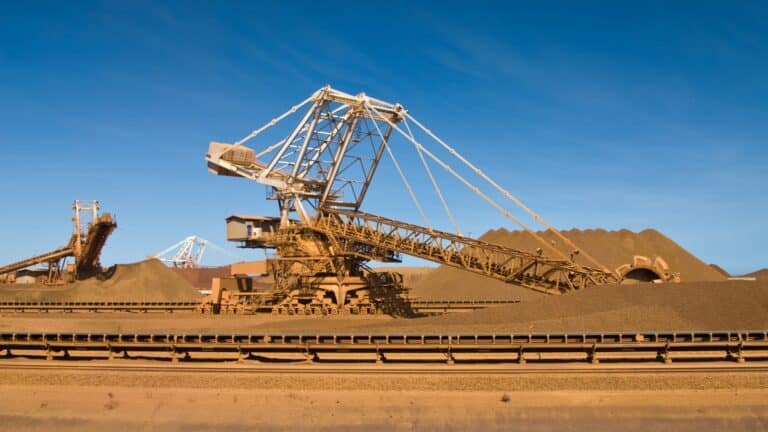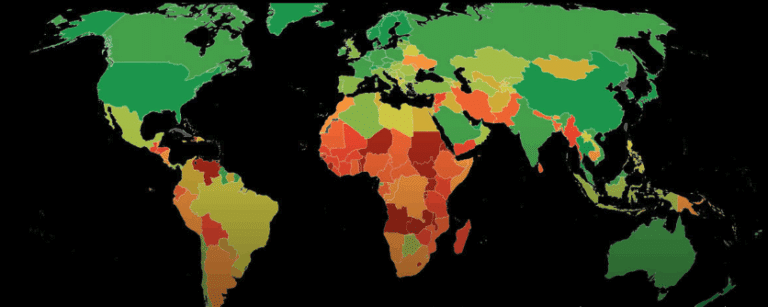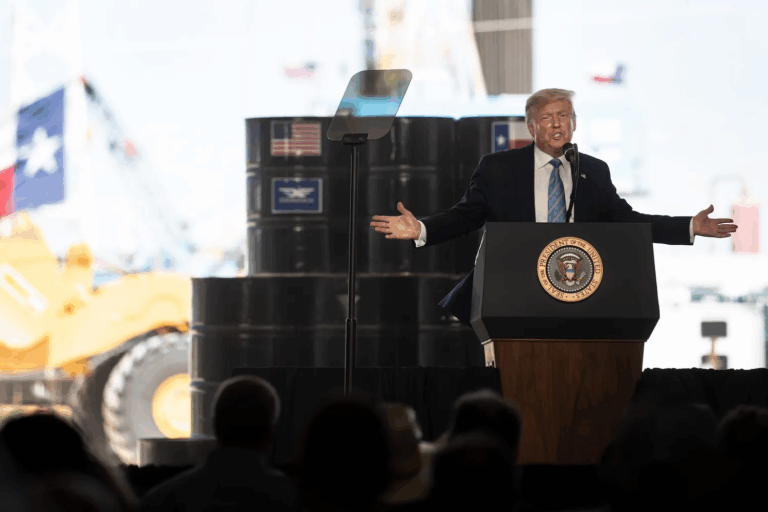Melissa Lott: [00:00:00] We’ve talked a lot on this show about switching from energy sources that emit greenhouse gases and cause climate change like coal and natural gas to zero carbon energy sources like renewables and nuclear. But what about the workers and communities that have helped produce those fossil fuels for decades? You might have heard the term just transition before, and it can mean different things to different people. But the idea is that as we make the switch to new and clean energy sources, we also have to transition the workers and communities that produce coal, oil and gas to new sources of employment and revenue and the prospect of making that transition. It can bring up a lot of fear for communities. [00:00:39][39.2]
Dennis Doherty: [00:00:41] And the fears front, I think. Right. That looks like depending on the community, this community will not exist. Or if it does, it will be a fraction of what it looks like now from an economic standpoint. [00:00:57][15.1]
Melissa Lott: [00:00:57] This is Dennis Doherty. He’s the executive director of Colorado’s American Federation of Labor and Congress of Industrial Organizations, which people call the AFL-CIO. It’s a federation of unions. Colorado is one of the places in the United States really wrestling with this concept of a just transition for workers in the fossil fuel economy. You might not know this, but Colorado is coal country. Colorado is the 11th largest coal producing state with six active coal mines. And for those communities, the question of a transition runs deeper than just jobs. [00:01:30][32.5]
Dennis Doherty: [00:01:31] The piece that sometimes doesn’t get talked about is this isn’t just, you know, one person working. I mean, this is generations and especially in the coal mines and the sense of identity that comes with being somebody who works in a power plant or a coal mine is is intertwined with with so many people in that line of work. It’s central to their core. And there’s a lot of pride in and rightfully so, the work that these folks do. Right. To to keep the lights on for all of us. [00:02:08][36.8]
Melissa Lott: [00:02:11] This is a big challenge for Colorado. And a few years ago, Dana started working with a group in the climate and labor movement to try and figure out exactly what a just transition would look like for the state’s coal communities. [00:02:22][11.6]
Dennis Doherty: [00:02:23] One of the biggest elements of the success here in Colorado is we sat down with environmental justice groups, faith based groups, community groups very intentionally and had a facilitated conversation about what does a just transition look like for Colorado. [00:02:40][17.3]
Melissa Lott: [00:02:41] These conversations laid the groundwork for a really important bill. In 2019, Colorado passed this bill called HB 1261, which mandated reductions in greenhouse gas emissions of 50% by 2030 and 90% by 2050. Other states have passed similar laws in the last few years. I’m talking about New York, Minnesota, Washington. But at the same time, Colorado also passed a second bill, HB 1314. This bill basically created an entire new office within the Colorado state government, one dedicated to just transition planning. That’s a pretty big deal. [00:03:19][37.9]
Dennis Doherty: [00:03:20] This is important because to our knowledge, this is the first dedicated office at any level of government specifically tasked with making sure the transition for workers in communities is, you know, it’s morally recognized within the legislation, is a moral imperative for the state and into to draw attention to the fact that, you know, coal communities across the state are important for the fabric of Colorado. And that’s a focus on what’s next for both the workers and the communities is a role that the state can and should play. We owe those communities so they don’t become ghost towns. [00:04:03][43.1]
Melissa Lott: [00:04:04] This week, we’re bringing you to Colorado, where the state is trying to work out how to enact a road map that’s good for the climate and also supports communities as they transition away from coal. This is the big switch, a show about how to rebuild the energy systems that are all around us. I’m Dr. Melissa Lott and I’m the director of research at Columbia University’s Center on Global Energy Policy. So this bill created this new office called the Office of Just Transition. And one of this office’s first tasks was to put together an advisory committee that included representatives from labor unions, coal communities, utilities and the state. Dennis is the executive director of that advisory committee. And their job was to create a plan, a draft document that they would submit to the state that would serve as the basis for the state’s official Just Transition Action plan. [00:04:58][53.7]
Dennis Doherty: [00:04:59] A lot of our early work was coming together, both as a committee with all our different experiences and expertise going out into the community. We had desire to go to all the communities in Colorado that that had coal mines or power plants, but we ended up making a big trip to northwest Colorado. And actually during that day, the governor announced the first case of COVID. So we were cut short there. But the office got feedback through other mechanisms from folks in that community to inform the plan and to make sure that that was really a driver of what we produced. [00:05:37][37.8]
Suzanne Tegan: [00:05:37] For the first time, the legislators in Colorado and the administration here have made the choice to support and involve coal workers and communities in this transition. They have been the ones providing our electricity for many decades. And so we want to make sure that these changes are fair to them. And I would say to, you know, we’ll go through more transitions, not just in Colorado, not just in this country, but economic and cultural transitions in the world. So if we can do this one better than we’ve done the ones in the past, it behooves all of us because more changes are coming. [00:06:14][36.7]
Melissa Lott: [00:06:15] This is Suzanne Tegan. She’s the assistant director at the Center for the New Energy Economy at Colorado State University. And like Denis, she thinks a lot about this concept of a just transition. [00:06:25][10.7]
Suzanne Tegan: [00:06:28] We’re talking about a huge nation wide and worldwide really economic transition out of one industry into something new. And the just part is that we’re hoping to transition in a fair and equitable way this time. We have been through transitions before without taking care of the people who have to make the biggest changes, and we want to do a better job this time. So you can think about other economic transitions, like when lumber mills started to closed and therefore the people who were doing the logging lost their jobs. That also happened in the textile industry. These economic transitions are not just one industry. They’re the whole supply chain. And the indirect jobs are also included in that. So they have really big implications on the workers, their families and their culture. In reality, into our entire towns that were built around like logging or in this case around coal, are in danger and really worried that they’re losing their number one revenue stream and they’re also losing their identity, they’re losing their cultural identity. And those are other really important parts of the transition that have different connotations. And there are different definitions of environmental justice and energy justice. But it’s basically the fair treatment and meaningful, meaningful involvement of people, regardless of, you know, who they are and where they come from. When we’re thinking about the development and the development of whatever comes next. [00:08:04][96.6]
Melissa Lott: [00:08:13] When it comes to a just transition and equity in the transition and all of that, in my mind, I keep thinking of it as just being very conscious and intentional about not creating rules and creating systems that block people out. And I’m curious what you think about this. Like when I think about coal towns and like how you actually plan a just transition or address transformation or however you want to use it. Like, how do you do that? How do you create a system where you aren’t leaving folks behind? Is that actually the right way to think about it? [00:08:44][30.8]
Suzanne Tegan: [00:08:44] We’ve never done this before. So I think we’re trying different methods. And you can see that around the country and around the world. And some transitions are more supported by governments. And so the governments will invest more money into the transition. And we’re really seeing that happen here today. It has not happened in this country in the past. But right now, with the infrastructure law from the federal government, we are seeing a lot of money that will be poured into call communities and into technical assistance for coal communities and for helping make that transition. And different coal communities, of course, are in different positions. You know, there are people who have been working in in coal mines who right now don’t even have access to electricity, for example, in the southwest. That’s one of the things that we’re dealing with on the Navajo Nation. So the issues that they need to take care of when they look at transitioning from coal are not just that the jobs were lost and the revenue from, you know, coal is being lost in those communities. But it’s also what are the basic needs of that community. And when we build now and when we retrain, you know, what are the jobs that are needed? What industry can we transition to and how can we make sure that first, before we talk about, you know, an economic transition and maybe transforming Main Street or taking care of people’s basic needs, like making sure that people have clean water, making sure they have access to electricity, broadband, making sure they have affordable housing, that kind of thing. But but, yes, I think what you said is true. You know, we’re trying to go through this economic transition and and inclusion is intentional. Right? We have to be intentional about it. So we have to make sure that it’s not just the CEOs of utilities who are making decisions or our government leaders that are making decisions, but that we’re involving folks in the community who don’t always have that megaphone. [00:10:59][134.3]
Melissa Lott: [00:11:00] In your work, in the work that’s going on around Colorado. What would you say are the most important elements of just transition planning? So this is both from a state policy perspective and also this community led perspective. What are the biggest, most important elements, do you think. [00:11:14][14.2]
Suzanne Tegan: [00:11:15] Though? I would say one of the most important things to remember is that every location is different and solutions are going to be really context specific. So at the beginning, when we’re thinking about the energy transition, people thought, well, instead of being a coal community, you can be an X, Y, Z community and fill in the blank. And they thought that maybe a new industry would come in and replace the coal jobs, and maybe that would be a clean energy facility. So maybe solar jobs or something like that. I’ve heard that a lot, that when you look at the whole country, you know, renewable energy jobs are coming and coal jobs are phasing out. Well, that we don’t want to go into coal towns talking about things, solutions like that, because we haven’t talked to people yet about what they’re looking for. Right. And so we might not have enough solar in that area to make that cost effective. We might not have wind right there to make you know, to make sure that there’s you know, we need to make sure there’s enough resource for a wind farm or, you know, solar panels. Also, the people who are working in coal might not want to transition to renewable energy for various reasons, but one of them is that you can earn $80,000 out of high school in a coal job, whereas if you’re in a solar job, if you’re a solar technician, you can maybe earn, you know, $35,000, but you will have had to have a bunch of training. So the jobs, you know, are not equivalent and they don’t see them that way. So when I’m talking about context specific, I just wanted to bring that up that we just have to be careful that we don’t go in and say, you know, green energy is coming and coal’s phasing out because that’s not really how it’s working at all in the coal communities themselves. They will switch to something else, but it doesn’t necessarily have to do with energy. So that’s one important thing to think about. Many locations have time to plan. So it’s it’s really important to. Require transparency in planning. And so legislators can do this. County officials can hop in and say, hey, you know, we know that the Cole closures are coming, so let’s be really transparent in our planning. Let’s hold public meetings and get all the stakeholders together, including the utility and including, you know, whoever owns the coal mines. So we know what’s coming next. And every coal community member that I talked to, the number one thing they say is planning. I mean, they really the people who are going through it now or didn’t have time to plan are really adamant that they don’t want people to go through what they went through. So, you know, make sure that you think about it and it’s going to close in five years. You know, what does that mean for me and my family? I would also say that local workers can be hired to perform remediation and the reclamation of the coal mine or the coal plant. And so that’s a way for them to kind of keep their jobs for a few years as a little bit of a bridge also providing and this money can come from the state or federal government providing bridge wages, bridge health care, expanded access to unemployment benefits. Those things are really important. Of course, retraining is another big one and providing retraining not just to the coal worker, but to maybe a fourth of the coal worker. Sometimes things shift within the family and the the coworker is losing their job and the spouse can be retrained to something else as well. And so we want to make sure that it’s not just the people who are directly working in coal that get retrained. [00:14:49][214.2]
Melissa Lott: [00:14:50] I’m going to jump in here real quickly. So you might not have heard of worker retraining before, but it’s really important in just transition planning. It’s this idea that all these people who work in coal or oil and gas, as well as their families and community members, might need to get training in different skill sets so that they can transition to careers in other industries. Here’s Suzanne explaining that concept quickly. [00:15:11][21.5]
Suzanne Tegan: [00:15:12] Though. Worker retraining is pretty much what it sounds like. So you’re just you’re you’ve been trained in one industry. And in this case, you know, workers have been trained in the coal industry. So there are organizations that do skills mapping. And so what that means is they will look at the skills that you have in your current job and whether that means you you know, you work with heavy equipment, you work with a computer, you know, you’ve been trained on electrical or, you know, engineering or other ways of doing things. The skills are written down. And then you look at the the industries that you could transition into. So you could go into construction, for example, or you could teach at a community college, or you could, you know, there are other industries you could work in the oil and gas industry. Some people are transitioning into that. So the skills that are needed are also written down. And then you look at the gap between them and that’s where the retraining comes in. So if you’ve had, you know, a year or something of training on, you know, electric in electrical engineering or to be an electrician or something, you might need another year, you might need six months to specialize in whatever comes next. And so it just depends on the skills that you have, the skills that maybe a new industry that you want to transition to has, and then what the gap is in between. And then for the retraining piece, somebody needs to talk about talk with you about the skills mapping and about that gap and what you might need to get to the next place. And then how do we provide that training? And so is it the sometimes it’s the utility. So if you’re a coal plant worker, a lot of times what’s happening, for example, at Xcel Energy in Colorado, that’s our biggest utility here, and they are retraining their workers to work either at another plant or for another part of their company. And what they’ve said in the transition is they’re not planning to lose any jobs. This is the power plant. People who work at the coal fired power plant, they don’t want their workers to lose any jobs at all. They will transfer them or they will retrain them. So that’s really helpful. The miners are in a different situation. The people who work at the coal mines, whether that be surface mines on the you know, on the ground, on top of the ground or underground mines, those folks will need to be retrained. And it doesn’t usually come from their company. It usually would come from a government organization. So maybe somebody at the state level or now we have money at the federal level for retraining those workers. And that can be done at community colleges or through apprenticeships or internships or things like that. [00:17:54][161.6]
Melissa Lott: [00:17:54] Aside from worker retraining, another big question is what will happen to all the tax revenue? Dennis said that some communities may lose as much as 50% of their tax base. That’s a big deal. That’s money that funds schools, emergency services, you name it. So I asked Suzanne about this. When you look at a community that’s in the middle of a big transition, it’s one industry. It’s going to a new one, whatever that is. Concerns about the tax base and that tax base that funds essential social services come up, right? That’s a big question mark for folks. So how can we use transition planning to prevent that loss and tax base or at least help to transition the tax base to other sources of revenue to make sure you don’t lose all these social services that are so important to the community? [00:18:37][43.2]
Suzanne Tegan: [00:18:38] Yeah, it’s such a good question. And I think when we’re looking at the big picture, this one stands out just as much as the workers losing their jobs because communities rely on their tax revenue, their tax base from the coal industry for their schools, their roads, their emergency services. And if a rural town loses their school, that is obviously devastating. So how can we make sure that the towns, the coal towns that we’re working with, you know, are not going to be completely devastated and are not going to lose those rural schools? And what the government has come up with and so in Colorado, we are in a unique situation because we have the office of just transition. But the federal government is is giving money to for coal communities to come up with solutions. And so these are grants and loans from the Department of Energy, from the U.S. Department of Agriculture, from the Economic Development Agency. So there are lots of different places where coal communities can apply for funding. And so whether that’s in the form of a grant or a loan to kind of bridge this time where we’re transitioning from coal to something else and so they can bolster community college funding. They can be the money can be used for infrastructure projects. And I think one of the biggest one of the biggest ways that the money will help is it’s used to help for technical assistance. And so people who are experts in economic transitions will help the coal towns get paid to help the coal towns get together, convene and talk to local leaders, talk to state leaders, and talk about what comes next and what that town is hoping for. And so they can provide some funding as kind of a bridge. But also, you know, they need the plan, they need the hope and they need the plan of what’s coming next. I think that will be a big part of it. In addition to the funding, of course, you know, right now we’re seeing more funding than we ever have in history for coal communities and for the energy transition. So I’m hoping that folks can take advantage of that from coal communities, the workers and their families, and that this will end up being a much more equitable transition than the ones we’ve seen in the past. [00:21:07][149.0]
Melissa Lott: [00:21:10] The transition away from coal is already underway in some parts of Colorado. For example, in Craig, Colorado, the Hayden Generating Station coal fired power plant owned by Xcel Energy will close within the next few years, but might be transitioned to a molten salt plant, which is a critical energy storage technology for renewables. [00:21:28][18.3]
Dennis Doherty: [00:21:29] Things like that are of interest to labor, alternative approaches to energy generation that are clean and keep and grow union jobs while still meeting carbon emissions goals. There’s a hope there, and especially from from us on Labor, that those can be more a bigger part of the solution. [00:21:56][27.0]
Melissa Lott: [00:21:57] When we think about transitioning our energy sources, this big switch that we’ve been talking about all this time. We also need to keep in mind the workers that have been producing that energy for so many years and make sure that they’re supported in the future to. [00:22:11][13.3]
Dennis Doherty: [00:22:11] Think of individual workers. They should think of the communities that that those individuals do the work in. And when they think of the phrase just transition, what can we do right as a society to ensure that those individuals and those communities have a fair shot at what’s next for for them and have the runway to do it? [00:22:38][26.4]
Melissa Lott: [00:22:40] And that’s our show. Next up on the Big Switch, we’ll talk about community solar in Houston, Texas. The big switch is produced by Columbia University’s CPS Center on Global Energy Policy, in partnership with Post-Script Media. This episode was produced by Daniel Waldorf and Alexandria. Her story editing by Ann Bailey, mixing in scoring by Sean Marquand and Greg. Bill Frank. Theme Song by Sean Marquand. A special thanks to our Columbia team. Q Lead Liz Smith and Natalie Volk. Our managing producer is Cecily Meza Martinez, and our executive editor is Steven Lacy. I’m Dr. Melissa Lott. And this is the big switch. [00:22:40][0.0]
[1322.8]










